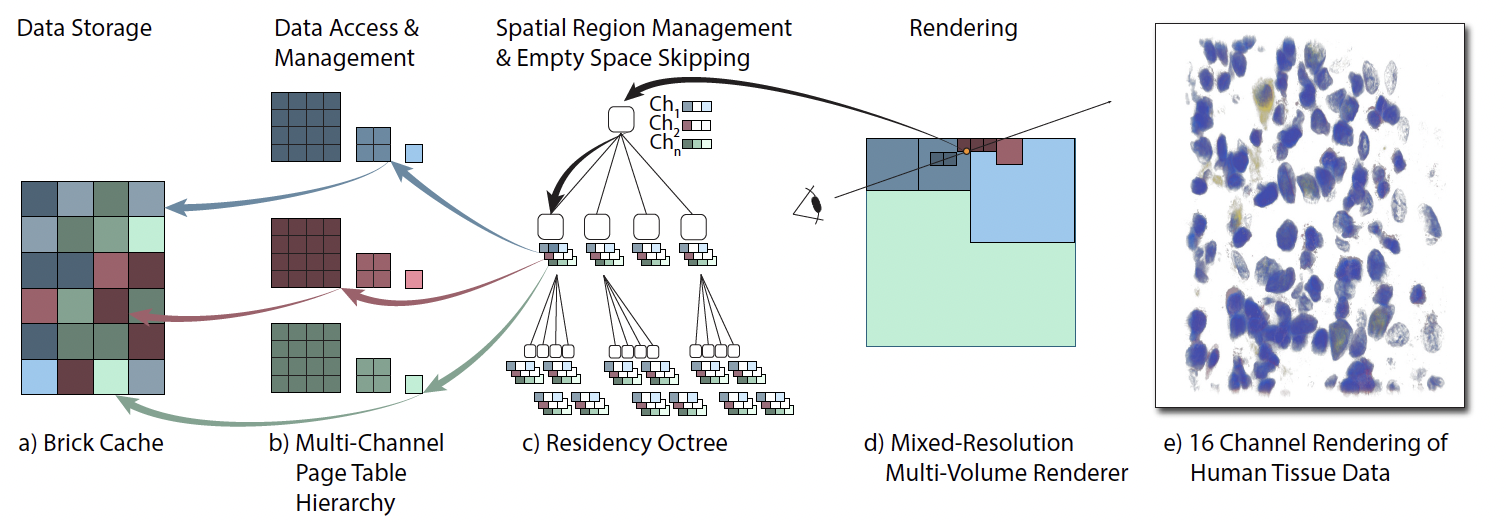
Residency Octree: A Hybrid Approach for Scalable Web-Based Multi-Volume Rendering
IEEE Transactions on Visualization and Computer Graphics (Proceedings IEEE Visualization 2023), 2023.
We present a hybrid multi-volume rendering approach based on a novel Residency Octree that combines the advantages of out-of-core volume rendering using page tables with those of standard octrees. Octree approaches work by performing hierarchical tree traversal. However, in octree volume rendering, tree traversal and the selection of data resolution are intrinsically coupled. This makes fine-grained empty-space skipping costly. Page tables, on the other hand, allow access to any cached brick from any resolution. However, they do not offer a clear and efficient strategy for substituting missing high-resolution data with lower-resolution data. We enable flexible mixed-resolution out-of-core multi-volume rendering by decoupling the cache residency of multi-resolution data from a resolution-independent spatial subdivision determined by the tree. Instead of one-to-one node-to-brick correspondences, each residency octree node is mapped to a set of bricks from different resolution levels. This makes it possible to efficiently and adaptively choose and mix resolutions, adapt sampling rates, and compensate for cache misses. At the same time, residency octrees support fine-grained empty-space skipping, independent of the data subdivision used for caching. Finally, to facilitate collaboration and outreach, and to eliminate local data storage, our implementation is a web-based, pure client-side renderer using WebGPU and WebAssembly. Our method is faster than prior approaches and efficient for many data channels with a flexible and adaptive choice of data resolution.
Acknowledgements
This work was funded by the NCI award U2C-CA233262 and the NSF award IIS-1901030. It has been supported in part by King Abdullah University of Science and Technology (KAUST). The paper was partly written in collaboration with the VRVis Competence Center. VRVis is funded by BMVIT, BMWFW, Styria, SFG, and Vienna Business Agency in the scope of COMET–Competence Centers for Excellent Technologies under Grant 854174 which is managed by FFG. We especially thank Clarence Yapp, who recorded and registered the 3D immunofluorescence data we use for the performance evaluation.